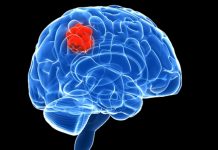Causes, Symptoms and Treatment
Acute leukemia is defined as a type of cancer affecting the blood and the bone marrow. The bone marrow is a spongy tissue within the bones which is responsible for formation of blood cells.
The name acute leukemia comes from its occurrence and behavior as it grows very fast most of the time affecting the immature blood cells leaving the matured ones. The term lymphocytic is given to this acute leukemia as it affects the lymphocytes, which are a group of white blood cells. White blood cells fight against infection.
This type of acute leukemia is most common among children, also occurs in adults. This type of cancer responds well to its specific treatment and at the same time spreads very quickly if not treated or unattended.
Acute Leukemia Symptoms
The acute lymphocytic leukemia at its initial stage may be mistaken as flu as it imitates the same signs and symptoms. Acute leukemia symptoms and signs may be much similar to any other common disease as well. Some of the common acute leukemia symptoms are as follows:
- Fever
- Loss of Weight
- Loss of appetite
- Fatigue or Weakness leading to loss of energy
The symptoms and signs of acute leukemia vary depending on the type of blood cells affected. Apart from these symptoms more specific symptoms may occur because of the reason of improper functioning of blood cells which may be as a result of accumulation of leukemia cells.
Acute Leukemia Treatment
Acute leukemia or acute lymphocytic leukemia treatment in general falls into three phases which may be described as the Induction therapy, Consolidation therapy and Maintenance therapy. The time taken for these therapies is two and a half to three and a half years. The acute leukemia treatment therapies under these three phases are the chemotherapy, radiation therapy and the bone marrow transplant therapy.
Chemotherapy
One of the acute leukemia treatment method used as a form of remission induction therapy for children and adults is the chemotherapy method. People with acute lymphocytic leukemia generally undergo this type of treatment method.
The time taken for this chemotherapy treatment is about four weeks but sometimes it may extend depending on the patient condition. Not only in the induction therapy but also in the other phases such as the consolidation and the maintenance phase this chemotherapy is used.
Radiation Therapy
This type of treatment is suggested by your doctor if the cancer cells have spread to the central nervous system. Like in any other cancer radiation therapy the acute lymphocytic leukemia radiation therapy also high-energy radiation beams are used to kill the cancer cells.
Bone Marrow Transplant
Bone marrow transplant falls under the consolidation therapy used for patients at high risk of reversion or for treating reversion when it occurs. This procedure is a bit complex but yields good results if properly executed. This involves the re-establishment of healthy stem cells, by replacing the cancer affected bone marrow with cancer free marrow.
During this acute leukemia treatment high dose of chemotherapy or radiation therapy to destroy any cancer producing bone marrow is simultaneously carried on for better results.
Stem cell transplant
Apart from the bone marrow transplant acute leukemia treatment the latest research has emerged with the Stem cell transplant. Though much similar to bone marrow transplant it differs in a way as the stem cells are collected from circulating blood or peripheral blood unlike the bone marrow transplant where the cells are collected from the bone marrow.
Leukemia or Blood Cancer >> Leukemia | Childhood Leukemia | Chronic Lymphocytic Leukemia | Causes of Leukemia | Leukemia Symptoms | Leukemia Treatment







